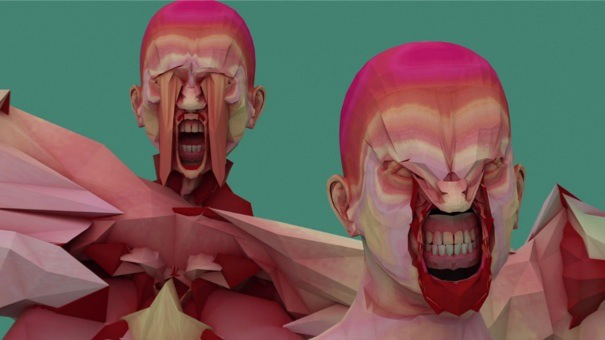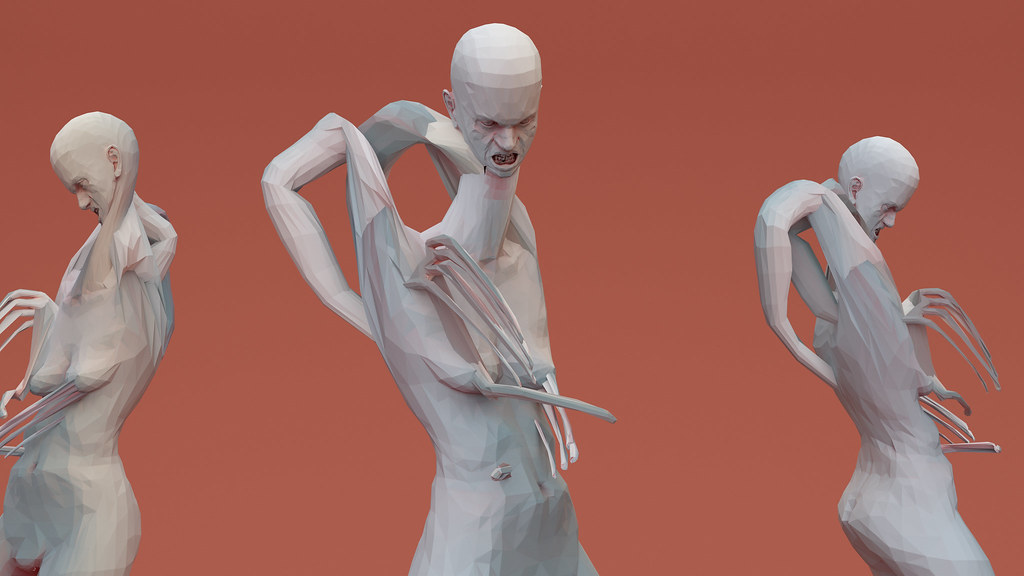Text by Piotr Bockowski

From a micro-evolutionary perspective, human life originated from the mutual cannibalism and incest of bacteria. Both phenomena are common tropes of body horror, referenced by Chronic Illness performers through visual forms of auto-consumption and autoeroticism in their acts. Cannibalism is the feeding of a body on another body of the same species, a devouring of an almost identical body, which is very close to eating itself. As such, cannibalism is symptomatic of the microbial self-digestion of decomposing bodies. Similarly, incest involves a coupling of a body with its own kind, referencing bacteria of the prehistoric proto-species incorporating each other into their bodies.
The Internet subcultures of virtual cannibals, like the one analysed by Beth Coleman (Hello Avatar, 2011), can be said to perform extreme versions of the primal auto-consumption desires. Dolcett Internet users, a particular fetish group who offer their cyberspace avatars to be eaten by other users in strangely sexualised rituals, are giving their bodies away to abyssal techno-nature, where the networks can decompose it with the aid of symbiotic and parasitic simulations. Humanity attained such a level of self-alienation that it can now experience its own destruction as an aesthetic pleasure of the first order, comments Virilio (Art and Fear, 2006). Media and bodies are feeding on and with each other. Similar visual metaphors reappear more and more often with yet stronger intensities of the aesthetics of body implosion in 3D art online.
Performance Capture animations of Mike Pelletier will be presented at Chronic Illness XX alongside Posthuman Pornography by Kenji Siratori. It offers vivid examples of that aesthetics, where technologically processed human forms collapse into themselves and yet unfold inside-out. Those forms can be perceived as an illustration of a certain abstract technological process. Still, they are not just an illustration – perhaps the general condition of 3D environments already evokes different experimentations with visions of bodily collapse.
3D animated ‘performances’ visually expose the undoing of the body through media. Also, in these examples, the communication networks prove themselves non-linear and non-surface. Playing with the mushrooming multitude of screen surfaces, mediatic digestion thus operates through networks deconstructing every image screened by vicious linking, reposting and accelerating network attention, mutating it and connecting with the hidden processing and generating programs or abyssal loop-tunnels. The mirror-illusions of technological interfaces for human bodies disperse them into fragmented fracture-lives. They are networks of undead bodies, which Nick Land calls Datacombs in his speculative fiction.
Datacombs are the catacombs of databases. Formed by the underground processes of the Internet, they don’t organise the world but rather decompose it into a multitude of incomplete carcasses of worldlings by means of involving the digital spaces in the rotting juices of the ‘external digestion’ of humans by communication technologies.
In the narration of Occultures, Land describes the outcome of the connection between computer databases and human nervous systems in terms of a delirious, fictional tropical infection. His Internet hallucination reinvents the soft machines of William Burroughs. Soft machines are the communication technologies that enter human bodies like junk and dangerously mutate with them. Their codes spread like a virus, deforming human bodies with disproportional organs and breeding the technoid larvae of invisible insects from outer space.

They are also related to Burroughs’ concept creation of ‘schlupping bodies’ that perform ‘the total osmotic ingestion or fusion of one body by another’, staged as a form of biotechnology related to queer sexuality and later developed into various technological means of bio-communication between human and nonhuman bodies. All those science-fiction figures used by Burroughs and Land accentuate media performativity that accelerates and spreads human characteristics far beyond the human scale. This contingency of self-digestion media, which makes a mediated human body behave with an agency of a microbe entity, is encapsulated by Stamets’ biomedial illustration of fungal infection within an insect body. The spores enter the body, eating through the exoskeletons and being absorbed via orifices that open the interfaces of the body:
Other portals of entry include the respiratory tract, anus, and mouth. Once inside, the mycelium forks and runs through the internal organs, interfering with the creature’s metabolism and causing malaise, necrosis, and death in a few days. The insects, looking mummified with fuzzy mycelium, then become a launching platform for further sporulation. With some species …, a tiny club-shaped mushroom … can sprout from the dead insect carcass.
Incorporation of Mike Pelletier’s Performance Capture animations into Chronic Illness XX accentuates this negative or destructive materialist perspective that media digestion offers, where ‘negative’ refers to the undoing of the body, which at the same time can be considered ‘positive’ in terms of entering a new mediatised forms of technologically-filtered bodily existence. Mike Pelletier’s animated performers distort their human body shapes with digital tools; they achieve novel corporeal forms that invite kinship with nonhuman entities.
Focusing on decomposition processes within communication networks brings attention to the base materiality of all cultures, which ultimately consist of human corpses, symbolically mediated into religions, knowledge and history. The death of humans is where the decomposers thrive, opening towards the realm of the microbial, which is where fungal mediations come from.
As much as human cultures attempt to repress those processes of decay that fuel life and feed on life, in some essential perspective, human cultures themselves are grounded in the decomposition of dead human bodies by constantly attempting to communicate with distant ancestors, worshipping totems of ghost and demons, or performing other rites of magic and religious ceremonies to explain the corporeal world.
The catacombs are the most ancient remains of human activity, giving evidence of the very first attempts of humans to communicate and extend their bodies. Cultures develop as symbolic techniques for the undoing of ancestral dead bodies. Graves and tombs are thus the original databases of human civilisation. Humans begin to reflect upon their lives precisely when the life of their bodies ceases to be human life. Mike Pelletier’s Performance Capture enacts this death of humanity via a transgressive experience of bodily mediation, opening animated bodies to unhuman agency via digital digestion.





